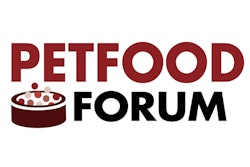Innovation continues to drive much of the activity in non-food pet supplies, with sales growth rates of pet tech products doubling or tripling those of most other non-food pet supplies categories, according to market research firm Packaged Facts in the recent report U.S. Pet Market Outlook, 2020-2021: Responding to the COVID-19 Impact.
During 2019, sales of "smart" pet products—those using Bluetooth, GPS, or RFID, and those able to connect to Wi-Fi or home networks—closed in on half a billion dollars, rising 11% to $491 million. Containment (including invisible fencing systems and "smart" pet doors) is the largest category, accounting for 36% of tech product sales, followed by collars/tags at 28%. Toys represent 21% of the total, with cameras and video systems and feeders/treat dispensers at 7% and 5%, respectively. "Smart" litter boxes—those incorporating Bluetooth/RFID and/or Internet connectivity (but excluding traditional motion-activated devices)—account for the remaining 3% of sales.
For most pet tech products, key selling points are product convenience, such as the ability of smart feeders to signal or relay food reorders; pet health and safety—primary selling points for pet containment and monitoring systems; and keeping pet owners connected with their pets and with petcare professionals.
Convenience as a motivator for pet owners cannot be overemphasized. In proprietary surveys of U.S. pet owners conducted by Packaged Facts, "product will save time/make my life easier" is a top purchase motivator for automated products, including litter boxes, feeders, waterers, toys, training devices, and pet doors. In Packaged Facts' February/March 2020 consumer survey of Pet Owners, 49% of dog owners and 48% of cat owners agree that "technology is allowing me to save time on pet care." Already, products designed to perform a service are well-established segments of categories formerly limited to manual items, from self-cleaning litter boxes to automated feeders to collars with monitoring capabilities. Most of the emerging pet tech products work in tandem with smartphone or desktop apps that allow pet owners to interact with the products and/or their makers and, increasingly, the pets themselves, with established product types being updated on a regular basis.
Despite the positive response of pet owners to the time-saving applications of technology in pet care, there is still plenty of room for advancement. Packaged Facts' February/March 2020 consumer survey also shows that less than a third of pet owners—29% of dog owners and 25% of cat owners—agree that they like buying high-tech/Internet-connected products for their pets. For marketers, focusing on the time-saving and health benefits of pet tech products would appear to be the way to go. In the same survey, 54% of dog owners and 49% of cat owners agree that they like the idea of high-tech pet health products that are Internet/smartphone app connected to provide veterinarians with health information. Marketing these products as a way to better connect with their pets is also critical: 46% of dog owners and 45% of cat owners agree that technology is allowing them to spend more quality time with their pet.
In addition to helping to keep pets healthier and facilitating petcare, the new wave of smart products is beginning to perform another valuable function: encouraging pet owners to restock specific pet supplies online—especially food, cat litter, and other consumables—via smartphone and desktop app, a function that has proven to be especially essential in the wake of the coronavirus pandemic. Packaged Facts expects automatic reordering and subscription services to become the norm among Internet-savvy pet owners, with e-commerce operations racking up sales, pet owner/shopper metrics, and customer loyalty.












